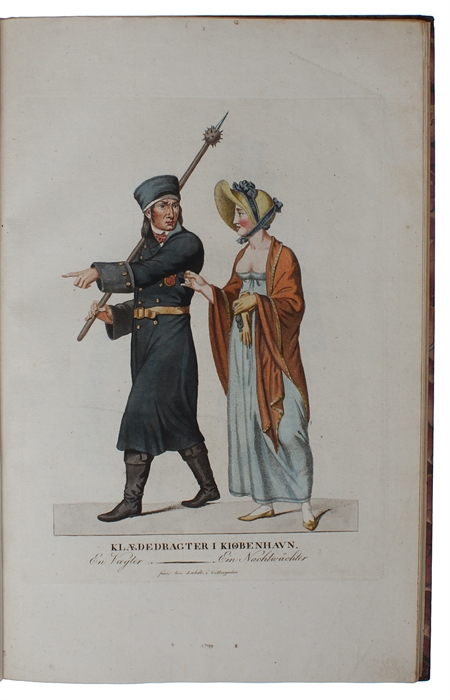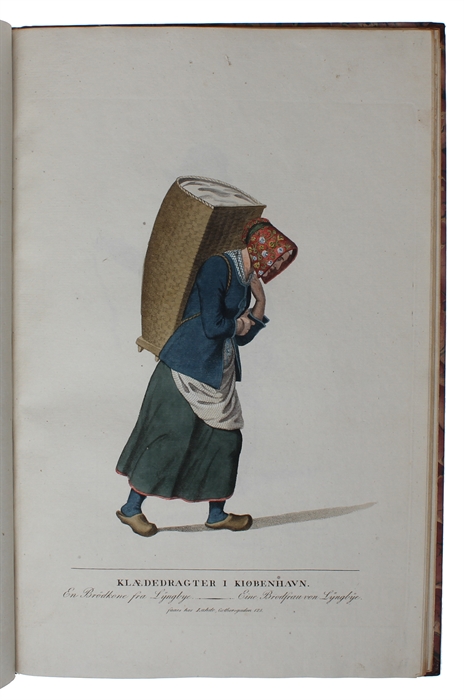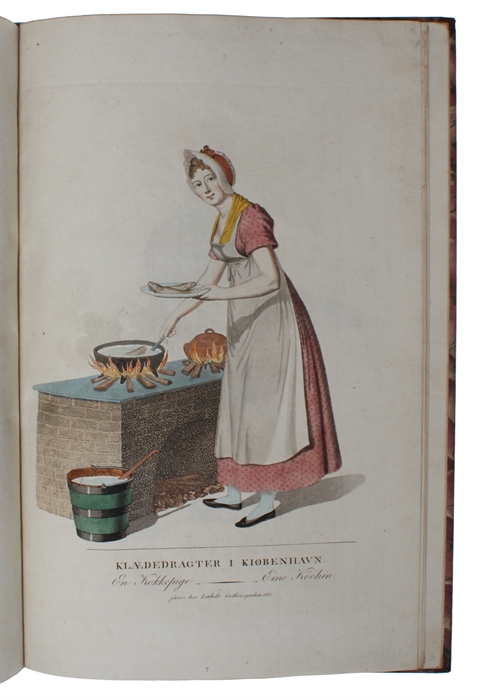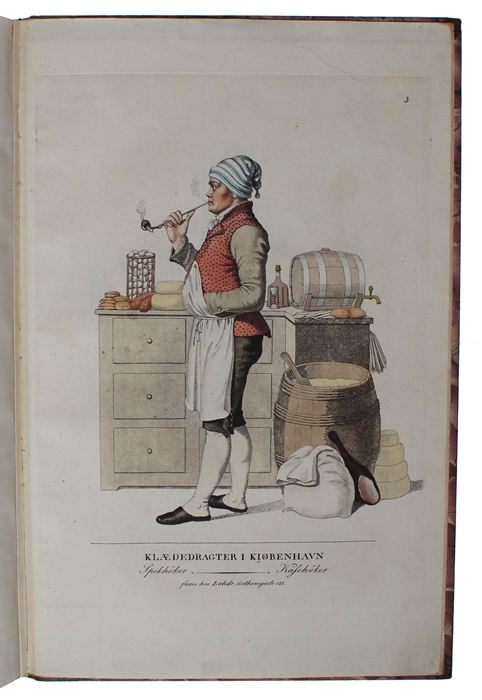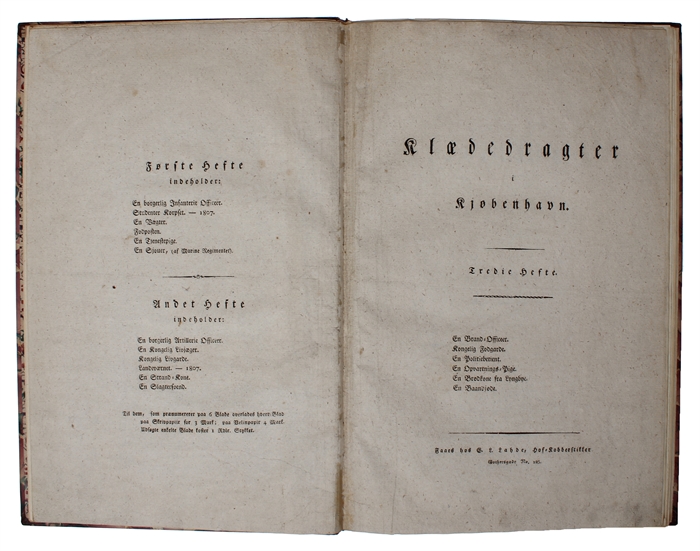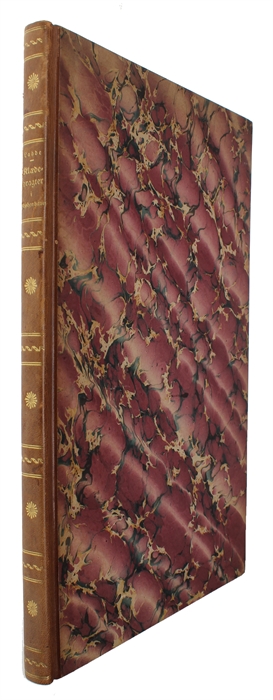THE COSTUMES OF COPENHAGEN
(SENN, JOHANNES, GERHARD LUDVIG LAHDE (& possibly C.W. ECKERSBERG) )
Klædedragter i Kjøbenhavn. 6 Hæfter (six issues).
Lahde, (1806 - ca. 1814) + (ca. 1818-20 for the final three plates).
Small folio (binding: 31,7 x 20,6 cm). Bound in an elegant pastiche half calf by Anker Kyster, with lovely gilt spine, old marbled paper boards and beautiful hand-made patterned end-papers. Bound with four of the exceedingly scarce title-pages/front wrappers for issues one, one/two three, and five, stating which plates were in the issue in question. Complete with all 34 magnificent engraved plates of costumes, all on large, good paper and in exquisite, precise original handcolouring. Most of the leaves measure 31 x 20,2 cm, one (En Brand Officer) measures 28x19,5. At the end are withbound the three final plates that were issued a bit later, with the complete ediiton of 1820. Thus making the final plate count 37. The three final plates all measure 28x20 cm. The two first plates have been neatly restored at upper right corner, far from affecting image. Otherwise, the copy is in magnificent condition. With the ex-libris of Oskar Davidsen to verso of front free end-paper.
The exceedingly scarce first edition of Senn and Lahde’s (with the possible collaboration of Eckersberg) magnificent ”Klædedragter i Kjøbenhavn” (Costumes in Copenhagen), which is the first work devoted to costumes of the Danish capital and thus of seminal historical importance to the understanding of Copenhagen folklore at the brink of the golden age. The magnificent plates are of unusually high quality and differ from those of other works of this kind in being more artistically ambitious. The plates show attempts at depicting action and movement and portraying a certain situation. They are much less stiff than other costume plates of the period, and the features of the persons in the pictures show an intentional individualization. In short, they are much more closely related to the genre painting than would be expected. This highly important and extensive collection of Copenhagen costumes was made in Denmark, by foreigners and with an international aim. The Swiss painter and engraver Johannes Senn (1780-1861) spent 15 years in Denmark, from 1804 till 1819, and the German-born Gerhard Ludvig Lahde (1765-1833) came to Copenhagen in 1787 in order to attend the Art Academy and later became a Danish citizen. The two artists find themselves at the beginning of a period, in which national feeling, the strengthened sense of nationality, and a romantic view of nature are rapidly growing; a period in which the interest in “common” man and the people of a nation are becoming the centre of attention. Out of this grows the need to represent the people, the “real” population, to the rest of the world and to claim a specific sense of what it is to be, in this case, a Copenhagener. “Klædedragter i Kjøbenhavn” began appearing in 1806, and we know that by 1810, three issues with six plates in each (i.e. 18 plates) had appeared. The following three issues appeared shortly after, though not all containing six plates (the fifth issue, as is evident from the exceedingly scarce title/wrapper bound in the present copy, only contained four plates), amounting to 34 plates in all. These plates later appeared in Lahde’s “Elementarværk I Tegnekunsten (1817-18), and a selection of 12 plates were issued separately under the title “Karakteristiske Figurer eller Det daglige Liv i Hovedstaden” (1812). A further three plates were issued later (these three plates have been added to the present copy), and in 1820, all 37 plates appeared together. In 1830, the work appeared again, this time with 35 plates, under the title “Kjøbenhavns Klædedragter eller Det Daglige Liv i Hovedstaden”. Provenance: Oskar Davidsen, one of the most significant Danish book collectors, whose collection included virtually all illuminated and coloured Danish books. (Colas: 1721 for the later edition, not having the original)
Order-nr.: 60268

